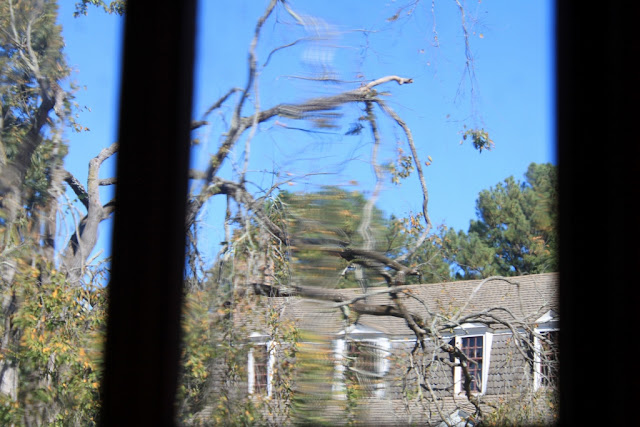 |
| Governor's Palace, Colonial Williamsburg |
Colonial Williamsburg
Colonial Williamsburg is a living history museum in Virginia. Williamsburg was, for a time before the Revolutionary War the seat of government of the Commonwealth of Virginia. The original city streets were laid out with a W superimposed upon an M for William and Mary. Nearly all remnants of that time have been obliterated. The city was named Williamsburg in honor of King William III of England.
Before the Revolution, Thomas Jefferson, James Madison, George Washington and others of the founding fathers helped further the cause of English governance in the colonies. The town served as a meeting place for the founders after the Revolution. Williamsburg was also occupied by Union forces led by General McClellan during the American Civil War. Since the seat of government had moved to Richmond, Williamsburg slowly fell into disrepair and neglect threatened to return it to the swamp.
In the 1920's, people like Reverend Goodwin and John D. Rockefeller began to take interest in Williamsburg and started the process of restoration, ultimately turning it into what it is today, the living history museum. Several historic buildings have either been restored or rebuilt on the original sites. Several non-historic buildings and businesses have been restored or rebuilt with the idea of giving visitors a flavor of what it must have been like during the years prior to and just after the Revolutionary War.
There are pubs, tradesman's shops, government buildings, churches and private homes restored as accurately as possible. People, employees of Colonial Williamsburg dress in colonial garb and call visitors m'lord and m'lady. It's like a renfest set in colonial times. For a fee, visitors can enter Colonial Williamsburg and wander it's streets and immerse themselves in the history and flavor of a colonial town. There are also staged historical events where costumed revolutionaries try to stir up the populace. All of this is balanced with the regular people who live there in Williamsburg, and the College of William and Mary.
We spent the day in Colonial Williamsburg and had a very enjoyable time of it. I'd love to bring my family back to experience all of this. Enough talk, let's look at pictures.
 |
| Hadn't even gotten out of the museum when this lady wanted a picture with me. |
 |
| Outside the governor's palace |
 |
| Really cool brickwork abounded |
 |
| Unicorn as a supporter of the governor's arms |
 |
| And a lion |
 |
| This detail ended up in the scene design by Richard Clifford for "She Stoops to Conquer" |
 |
| Nicely carve marble |
 |
| Guns and swords in the armory, also used as decoration |
 |
| Who knew that chandeliers wear socks? |
 |
| Epic newel post |
 |
| Wigs inside the governor's palace |
 |
| My that's blue paint. |
 |
| Iron stove |
 |
| Pediment over the door |
 |
| These kinds of details were everywhere |
 |
| There are the governor's arms again, or maybe they were William III's, I don't know |
 |
| Palladian details |
 |
| More fancy brickwork |
 |
| Brick and pickets, living together, mass hysteria! |
 |
| Here's the parliament building |
 |
| and an oak leaf |
 |
| Rain gutter |
 |
| Exterior of the parliament building |
 |
| Inside one of the chambers |
 |
| Mossy |
 |
| The world through old glass |
 |
| and more |
 |
| This guy wanted a duel |
 |
| Old andirons in a fireplace |
 |
| Inside the jail, or the gaol as it may have been called at that time |
 |
| Try digging out of this gaol |
 |
| I don't think they had those kind of sunglasses back then |
 |
| She might have been singing |
 |
| Inside the wigmaker's shop |
 |
| The wigmaker |
 |
| Some of her wares |
 |
| My favorite |
 |
| This one was cool too |
 |
| Then there was this guy |
 |
| Pretty sure these guys were conspiring to overthrow the government |
Colonial Williamsburg was a fascinating place, and one that I probably could have spent a few days visiting without seeing everything that was available. It's well worth the cost of admission. I believe it has been declared a national historic site, or something like that. I am not sure if the National Park Service manages this property in whole or in part.
I'd love to go back.
No comments:
Post a Comment